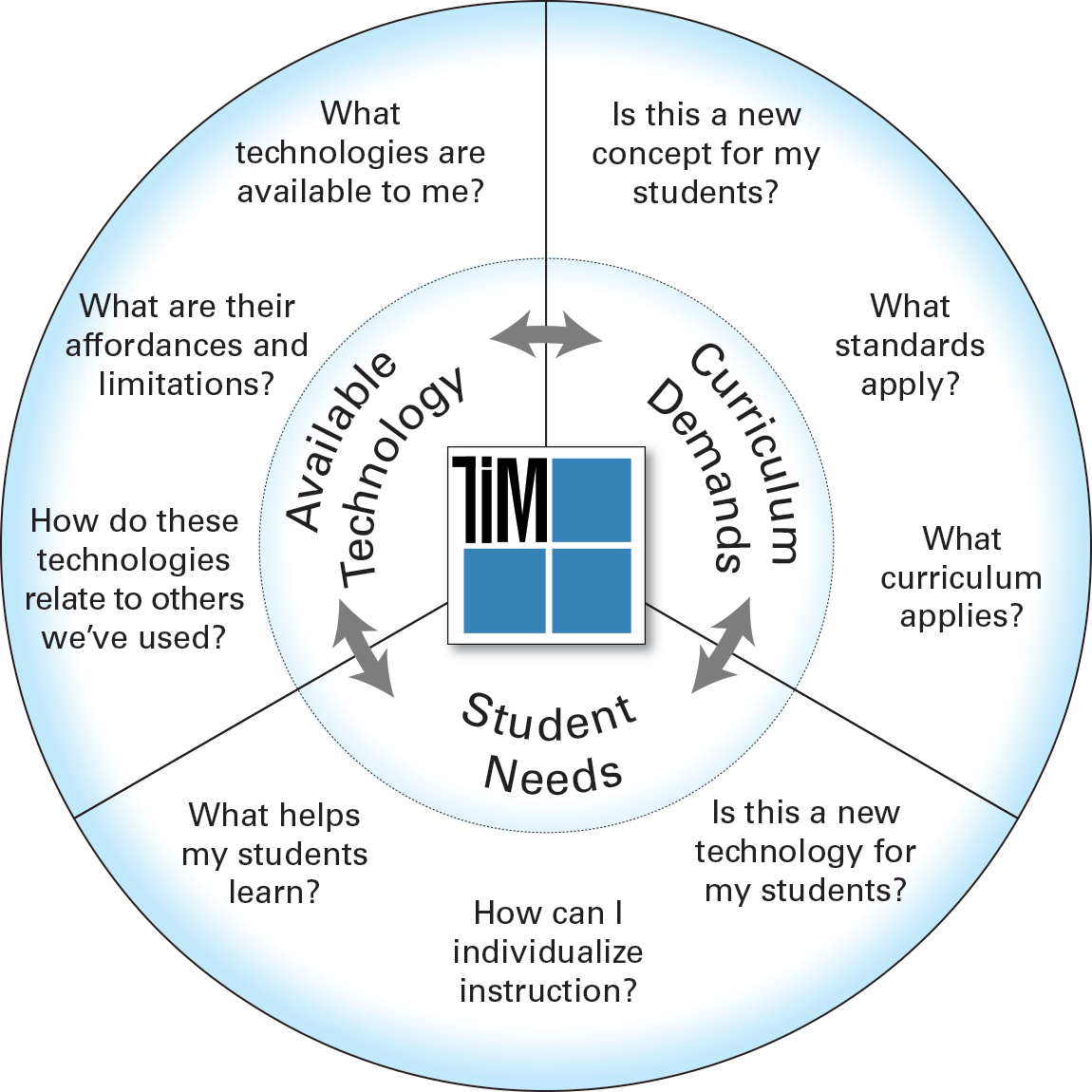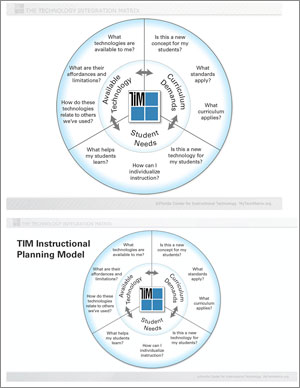
I’ve had the opportunity to observe in many different classrooms across a wide variety of schools and districts. In the best of classrooms, one notices a harmonious relationship among curriculum demands, student needs, and technology integration. In other classrooms, well, that relationship can be out of whack. Sometimes seriously. Technology may be driving instruction or curriculum demands may be leaving students in the dust.
To help teachers achieve a balance among these three areas, FCIT developed the TIM Instructional Planning Model.

Image reproduced from: Harmes, J. C., Welsh, J. L., & Winkelman, R. J. (2016). A framework for defining and evaluating technology integration in the instruction of real-world skills. In S. Ferrara, Y. Rosen, & M. Tager (Eds.), Handbook of research on technology tools for real-world skill development (pp. 137-162). Hershey, PA: IGI Global.
In a perfect world, teachers would always start with a consideration of student needs and curriculum goals. Then they would snap their fingers and all of the most appropriate technology would magically appear and knowledge of how best to use these technologies would be downloaded directly into student and teacher brains alike.
The real world is just a bit messier. We have to start somewhere when planning instruction and there is no technology magic. The important thing is not so much where we start, but whether we consider all three components and the relationships among them when planning instruction.
At FCIT we are big on emphasizing that technology should not drive instruction. The tail shouldn’t wag the dog. Student learning is the goal and technology use (or non-use!) should always be in service of that goal. However, that doesn’t mean that we don’t ever start by looking around our classrooms to see what tech is available. Quite the contrary. We should always be cognizant of what technologies are available to ourselves and our students. Furthermore, we should also seek to understand the affordances and limitations of those available technologies so we can best match them up with student needs and curriculum demands.
Once we start thinking about the three areas of the TIM Instructional Planning Model, all sorts of important relationships become apparent. A careful consideration of these questions will go a long way toward avoiding dysfunctional instruction. When combined with the Technology Integration Matrix itself, teachers have a great roadmap to transformational learning.
If you are interested in further unpacking these ideas, consider taking the “TIM for Instructional Planning” course.
Professional Development Resources

TIM Instructional Planning Model PDF
A printable PDF is available in two versions:
• US Letter
• International A4
Presentation Slides
Both standard and wide presentation slides of the model are available for professional development sessions.
Roy Winkelman is a 40+ year veteran teacher of students from every level kindergarten through graduate school. As the former Director of FCIT, he began the Center's focus on providing students with rich content collections from which to build their understanding. When not glued to his keyboard, Dr. Winkelman can usually be found puttering around his tomato garden in Pittsburgh.

